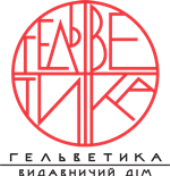INNOVATIVE ADDITIVE TECHNOLOGIES AND MATERIALS IN CONSTRUCTION USING 3D PRINTING FOR BUILDING CREATION
DOI:
https://doi.org/10.32782/apcmj.2025.1.7Keywords:
construction production, additive technologies, 3D-printing, construction printer, extrusion, construction site, sintering, sphere, fractionAbstract
The article analyzes the most common 3D printing methods used in modern additive construction technologies. In particular, three key methods are considered: sintering (selective laser sintering, SLS), laser stereolithography (SLA), and layer-wise extrusion (LOM). Each of these methods has its own features and advantages in the context of construction processes. The sintering method allows precise formation of objects from various materials, the laser stereolithography method ensures high accuracy and is used to create complex geometric shapes, while the layer-wise extrusion method allows efficient handling of large volumes of material. The article also emphasizes the importance of these methods for improving construction technologies and achieving greater efficiency in the manufacturing of structures. The article discusses innovative additive technologies used in construction, including Contour Crafting, Concrete Printing, and DShape. The principles of their operation, the advantages of their application compared to traditional construction methods, as well as the potential for creating complex architectural forms and reducing material and time costs, are described. In particular, the Contour Crafting technology allows the creation of large construction elements with minimal costs, Concrete Printing enables 3D printing of individual building parts, and DShape opens up possibilities for producing complex structures without the use of casting molds. The article highlights the importance of these technologies in the development of modern construction, their role in improving efficiency and reducing costs, as well as their potential in creating innovative construction solutions. Concrete was used as the material for the study, and samples were made in the form of cubes. The fractional composition of the components was determined. The concrete mix was prepared in a BSM-500 concrete mixer with a drum capacity of 500 liters. The physical and mechanical properties of the concrete were determined using 3D printing technology.
References
Buswell R.A., Leal de Silva W.R., Jones S.Z., Dirrenberger J. 3D printing using concrete extrusion: a roadmap for research. Cement and Concrete Research. 2018. № 112. P. 37–49.
Berman B. 3-D printing: the new industrial revolution. Business Horizons. 2012. Т. 55. № 2. P. 155–162.
Гончаренко Ю., Мельник А. Адитивні технології в будівництві : навчальний посібник. Київ : Нац. авіац. ун-т, 2019.
Сучасні технології 3D-друку: перспективи для будівництва. Науковий журнал Київського національного університету будівництва і архітектури. 2020. № 2. С. 45–58.
Labonnote N., Rønnquist A., Manum B., Rüther P. Additive construction: State-of-the-art, challenges and opportunities. Automation in Construction. 2016. Vol. 72. P. 347–366.
Lipson H., Kurman M. Fabricated. The New World of 3D Printing. Indiana : Wiley, 2013. 320 p.
Savytskyi N., Shatov S., Ozhyshchenko O. 3D-printing of build objects. Вісник Придніпровської державної академії будівництва та архітектури. 2016. № 3. С. 18–26.
Construction 3D Printing. Wikipedia: вільна енциклопедія. URL: https://en.wikipedia.org/wiki/Construction_3D_printing (дата звернення: 13.03.2025).
Winsun: 3D Printing for Construction. Future of Construction : вебсайт. URL: https://futureofconstruction.org/case/winsun/ (дата звернення: 13.03.2025).
Kazemian A., Yuan X., Cochran E., Khoshnevis B. Cementitious materials for construction-scale 3D printing: Laboratory testing of fresh printing mixture. Construction and Building Materials. 2017. Vol. 145. P. 639–647. URL: https://www.sciencedirect.com/science/article/pii/S0950061817306657.
Le T., Austin S., Lim S., Buswell R. Mix design and fresh properties for high-performance printing concrete. Materials and Structures. 2012. Vol. 45. P. 1221–1232.
Tay Y.W., Panda B., Paul S.C., Tan M.J., Quian S., Leong K.F., Chua C.K. Processing and properties of construction materials for 3D printing. Materials Science Forum. 2016. Vol. 861. P. 177–181.
Malaeb Z., Hachem H., Tourbah A., Maalouf T., Zarwin N., Hamzeh F. 3D concrete printing: machine and mix design. International Journal of Civil Engineering. 2015. Vol. 6. P. 14–22.
Ceresit helps revolutionise construction for Ukraine’s rapid reconstruction: first residential build - ing 3D printed. Henkel : вебсайт. URL: https://www.henkel.ua/press-and-media/press-releases-andkits/2024-08-21-ceresit-helps-revolutionise-construction-for-ukraines-rapid-reconstruction-first-residential-building-3d-printed-1983086?utm_source=chatgpt.com (дата звернення: 13.03.2025).
Савицький М., Айріх Ш., Халаф І.З. та ін. Архітектурно-конструктивно-технологічна система 3D-друку будівельних об’єктів : монографія / за ред. М. Савицького. Дніпро : ФОП Удовиченко О.М., 2019. 233 с.
Lipson H., Kurman M. Fabricated. The New World of 3D Printing. Indiana : Wiley, 2013. 320 p.
Іванов-Костецький С., Гуменник І., Воронкова І. Шляхи застосування технологій 3D-друку у створенні сучасних об’єктів архітектури. Вісник Національного університету «Львівська політехніка». Серія «Архітектура». 2022. С. 54–64. DOI: 10.23939/sa2022.01.054.
Hager I., Golonka A., Putanowicz R. 3D printing of buildings and building components as the future of sustainable construction. Procedia Engineering. 2016. Vol. 151. P. 292–299. DOI: 10.1016/j.proeng.2016.07.357.
Tay Y., Panda B., Paul S., Noor M., Tan M., Leong K. 3D printing trends in building and construction industry: a review. Virtual and Physical Prototyping. 2017. № 12 (3). P. 261–276. DOI: 10.1080/17452759.2017.1326724.
The Construction Industry with Additive Manufacturing: An Opportunity Analysis and Ten-Year Forecast. SmarTech Analysis. URL: https://www.smartechanalysis.com/reports/additivemanufacturingin-construction (дата звернення: 13.03.2025).
Pershakov V., Bieliatynskyi A., Bakulin E., Bakulina V., Bolotov G., Popovych I. Тенденції розвитку світового висотного будівництва. Revista Española de Derecho Constitucional. 2016. № 61. P. 62–72.
3D Printer G-code Commands: Full List & Tutorial. All3DP : вебсайт. URL: https://all3dp.com/2/3d-printer-gcodecommands-list-tutorial/ (дата звернення: 13.03.2025).
ДСТУ Б В.2.7.-214:2009. Бетони. Методи визначення міцності за контрольними зразками. (Чинний від 01.01.2010 р.). Київ, 2010. 43 с.







